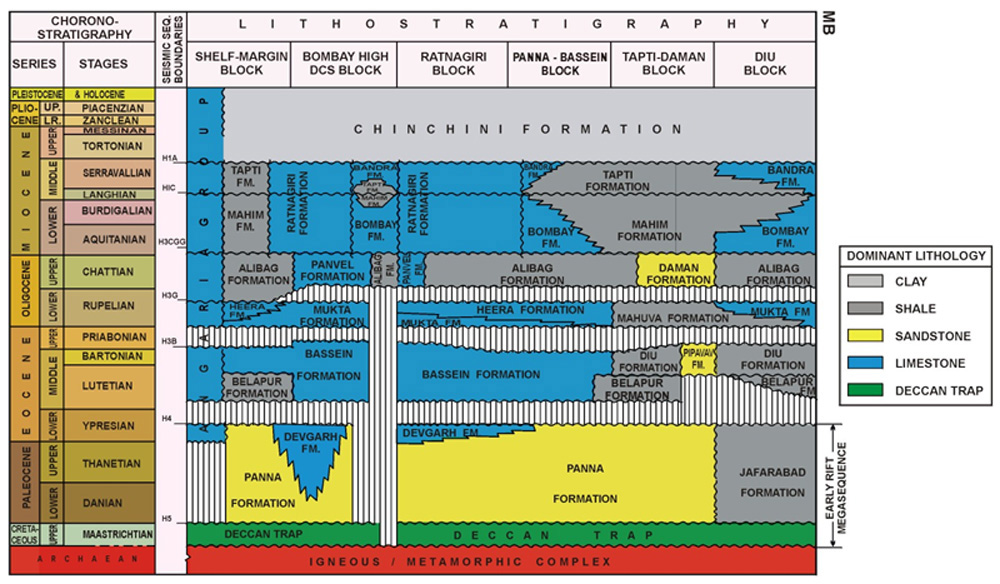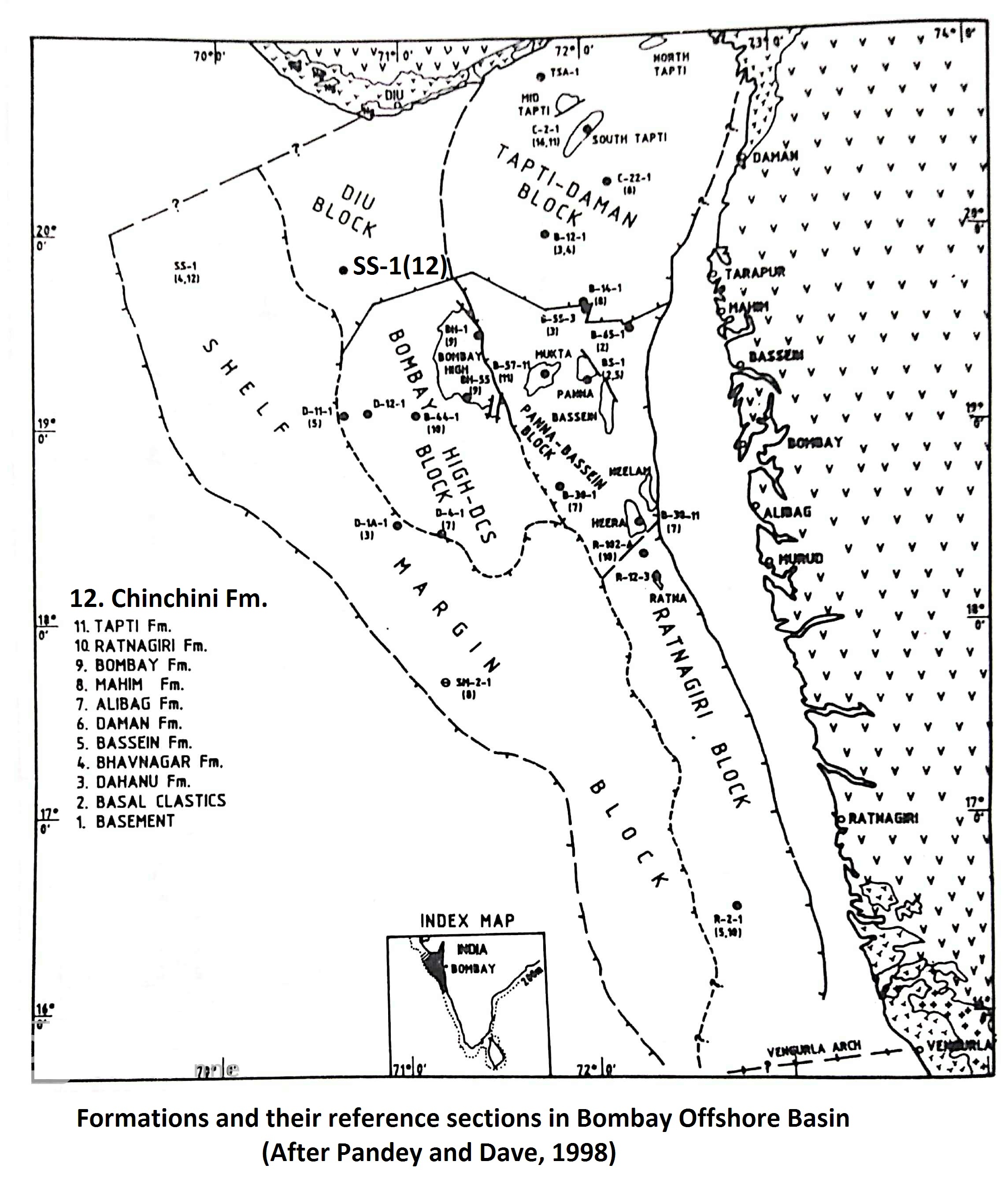Chinchini Fm
Type Locality and Naming
Well SS-1, (depth interval Seabed – 1700 m). [Original Publication: Rao, R.P. and Talukdar, S.N., 1980. Petroleum geology of Bombay high field, India. Journal name , volume pp: 487-506.]
Synonyms: A predominantly clastic sequence, disconformably overlying the Bandra Fm was informally referred as Chinchini Formation by Rao and Talukdar (1980). Basu et al., (1982), referred this unit as the Tarapur Formation. Since the name Tarapur preoccupies in the stratigraphy of Cambay Basin, the name Chinchini Formation has been adopted by Zutshi et al. (1993) (Source: Pandey and Dave, 1998)
[Figure: Lithostratigraphy in Mumbai Offshore blocks (from NDRDGH.gov.in; after Jitendra Misra, 2009)]
Lithology and Thickness
Claystone. The formation consists of greenish-grey to bluish grey sticky clays and claystone with frequent intercalations of shell debris. In the basal part, shales with limestone intercalations occur. In Ratanagiri area in the south and more western part of shelf margin depression (SM-1 structure), a massive bioclastic limestone unit occurs within the Chinchini Formation. The thickness of the formation is 1688 m in type section. It shows gradual increase in thickness from east to west within the basin. Clay/Claystone that provides a seal for the reservoirs of the Offshore region.
[Figure 1: Formations and their reference sections in Mumbai Offshore Basin (after Pandey and Dave, 1998)]
Relationships and Distribution
Lower contact
The formation disconformably overlies Bandra Fm, Ratnagiri Fm and Tapti Fm in different parts of the Bombay offshore Basin.
Upper contact
The sediment water interface / sea bed.
Regional extent
Entire Mumbai offshore region
GeoJSON
Fossils
A very rich assemblage of foraminifera including Globigerinoides fistulosus, Globigerina nepenthes, Neogloboquadrina acostaensis, N. hummerosa, Dentoglobigerina actispira and Sphaeroidinella dehiscens have been recorded.
Age
Depositional setting
A shallow-marine environment varying from inner neritic to outer neritic has been inferred for the formation.
Additional Information

